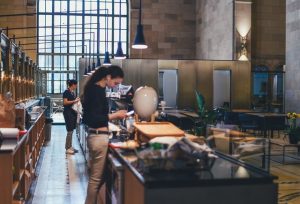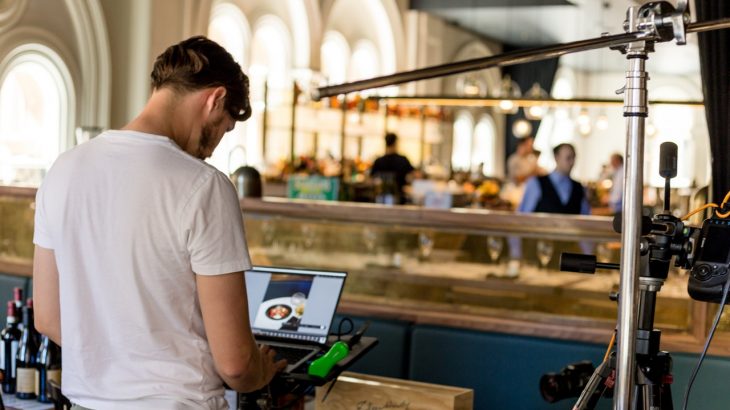Large, industrial area art spaces are becoming increasingly popular. No longer just for Hipsters here are some of the best spaces from around the world!

Basilica Hudson, New York City
Everything storage facility conversion dreams are made from, and the type of area that requires you to utilize the word “area” far to frequently when explaining it (get ready for more of that on this list …), the Basilica Hudson is a repurposed foundry 2 hours inland from the Big Apple on the Hudson River surrounded by low loaders, cargo ships and docks on the banks. Established as a non-profit multidisciplinary art area in 2010, the Bascilica now serves as a place for “non-traditional art experiences”. The open, hangar-like structure hosts routine weekend occasions to draw individuals from the city. These consist of the “Farm and Flea” markets, routine screenings of movies from sci-fi to John Waters and shows that have actually up until now consisted of artists such as Grimes, Godspeed You! Black Emperor and Angel Olsen. A key event of the year’s programs is the yearly Basilica Soundscape celebration: a weekend of multimedia arts and music that changes the blank area of the Basilica into an incubator of speculative noises.
The Spinnerei, Leipzig
As in any city or area whose art scene has actually progressed, the east German city of Leipzig has actually discovered its previous commercial structures offered brand-new life by its imaginative locals. The very best known of these is the Spinnerei, a substantial complex of red-brick factories that was main Europe’s biggest cotton spinning mill. Production decreased in 1992 and ever since numerous areas have been gradually inhabited by artists, designers, musicians and other creatives. In the last years the Spinnerei has gained larger prominence with the opening of exhibit areas from worldwide galleries. Of these, Hall 12 is a big, light area with outstanding interior design style utilised for visitor exhibits. Larger still is Hall 14; a huge 20,000 sq metre previous production hall that has exhibits, displays and an art library. While specific galleries run their own programs, you can likewise go on directed trips of the website to obtain a feel for the history and advancement of the location. Somewhere else in Leipzig is the Kunstkraftwerk, a previous power plant that’s been changed into another art area, marking the most recent significant cultural project for the city.
Mikser Home, Belgrade
Inhabiting a light, wonderfully refurbished storage facility, Mikser Home (developed by designers Maja Lalic, Aleksandar Spasojevic and Ivana Ibraimov at Remiks studio) has ended up being Belgrade’s most popular arts centre, opening in the run-down Savamala area in 2013. It signs up with another location in the post-industrial location: KC Graduate, which has a bar, exhibit area, hosts club nights and has been a crucial driver for the city’s independent arts scene. While the environment at KC Graduate is more subtle– lampshades made from laminated recycled plastic and a casual, more youthful environment– Mikser is sharper and slicker, with wooden laminated tables showing work by Serbian designers for sale, a coffee shop (with outstanding coffee, obviously) and areas to use your laptop computer and work. At nights the area is changed for theatre, productions and celebrations.
Russell Industrial Centre, Detroit
The year Detroit stated itself insolvent, 2013, was the same year the Russell Industrial Complex, a century-old factory area synonymous with the idea of slab cranes, pressing machines and blue collar labour, started changing into the innovative town that it is today. Now it is among the biggest creative neighborhoods in the midwest, supporting everybody from furniture-makers to designers. The respected seven-building complex catches the essence of Detroit as it starts to take a brand-new identity– beyond that of cars and truck manufacture. And the areas are extraordinary: large passages lined with standard factory windows, big storage facility areas and an old-fashioned water tower that gazes over the network of structures. Though it is primarily utilized as a work area for artists, there are regular events– from block celebrations to open studios– for those who wish to explore, with the greatest being the yearly People’s Arts celebration.
The Swimming pool, Tokyo
Considering this concept shop is the work of Tokyo’s king of cool Hiroshi Fujiwara– considered the “godfather” of Harajuku street style– it’s not a surprise what an extremely stylish joint this area has actually ended up being. The store changes an unused pool in a run-down 1970s home block into a tidy, light, almost-futuristic environment that still protects previous functions. The sunken swimming pool location is the centerpiece and the shop area makes up the pool surrounds for the area, with glass floor covering fitted throughout the base and clean glue laminated wood finishes. On the other hand, the stripped-down walls have been left bare, apart from areas still lined with blue and white tiles. Designer Nobuo Araki– who has dealt with creating galleries in the past– teamed up with Fujiwara to produce the store, which promotes an environment that recognisable yet discreetly modified, a fitting area for the perfectly developed clothes and items on display within it.
Ler Devagar, Lisbon
If you have actually ever wished to see an enormous wall of books, Ler Devagar (Portuguese for “read slowly”) is a great location to satisfy your need. Ler Devagar inhabits an old material factory; books are stacked practically to the top of the high ceiling, while commercial metal sidewalks and stairs take you around the store. Just like Librairie Avant Garde, it’s rather various in tone to the moldy, dark, Black Books-esque book shops that comprise most literary dreams, however in lots of ways the repurposed interior sets off the creativity in precisely the method a bookshop must do. Dotted with sculptures– the most popular being a flying bike hanging from the ceiling– the store likewise has two bars separated by retaining walls, making it a lovely social and innovative environment to immerse yourself in. Ler Devagar becomes part of the LX Factory complex in the Alcântara area, now an “island” of art, style and style areas– consisting of more recent celebration areas such as Town Underground Lisboa

